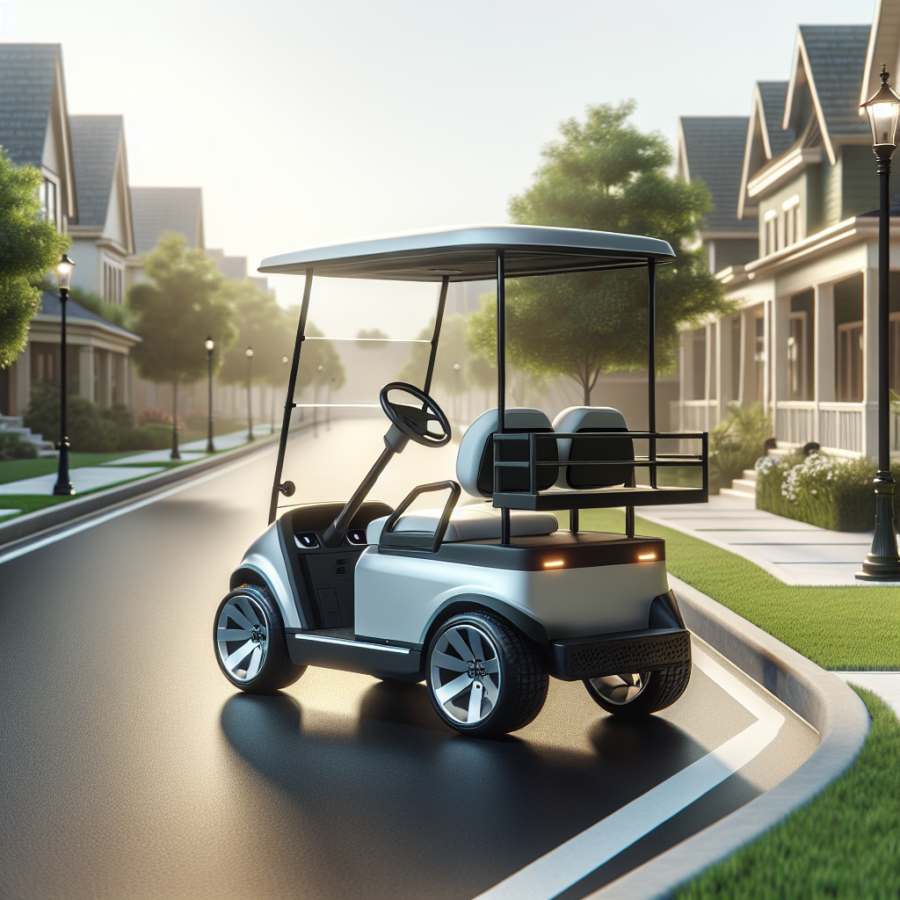Necessary Modifications to Render a Golf Cart Street-Legal
While it may seem far-fetched, golf carts can indeed become street legal with some necessary modifications. These modifications not only enhance the safety and functionality of the golf cart but also ensure that it complies with local and federal road regulations. Here's what you need to know about the steps required.
First, you need to ensure your golf cart is equipped with headlights and taillights. These are critical for visibility, allowing other drivers to see your golf cart, especially during night-time or in low-light conditions. Some states may also require that the headlights are adjustable and have both high and low beam settings.
Next, turn signals and brake lights are needed. These essential features allow you to communicate your intended driving maneuvers to other road users, preventing accidents, confusion, and traffic congestion. Additionally, these features must be in a high state of working condition at all times.
Adding mirrors to your golf cart is another essential step. A rearview mirror, alongside left and right side mirrors, can significantly improve the driver's visibility. It helps the operator to see behind and on the sides, which contributes immensely to safety on the road.
Seat belts are non-negotiable when it comes to making a golf cart street legal. They should be available and functioning correctly for every seat in the cart. Whether you're driving a 2-seater or a 4-seater, your golf cart should have the corresponding number of seat belts.
Windshields are also crucial for a golf cart to operate legally on the road. This feature not only protects the driver from wind and dust but also offers some level of safety in the event of a collision. Some jurisdictions may also require that the windshield be made of a specific safety-rated glass type.
Your golf cart should be equipped with a horn or some other audible warning device to caution pedestrians and other road users. This addition plays a pivotal role when traveling in busy or densely populated areas.
Another essential modification to consider is outfitting your golf cart with a vehicle identification number (VIN). Local regulations may necessitate golf carts to have their own VIN for ease of identification, particularly in the case of theft or accidents.
Finally, you should ensure your golf cart has the suitable tires for road usage. They should not only be the correct size but also of the right pressure, and the treads should be in good condition to ensure maximum safety.
These modifications, among others, are vital to making your golf cart fully functional, safe, and legal to operate on the road.
Read also:
Seven-a-Side Football: The Dynamic Game Explained
Understanding the Legality of Golf Carts on Public Streets
While it’s not unusual to see golf carts cruising around golf courses, an increasing number of people are starting to use them off the course as well. These small vehicles are easy to drive, they're fuel-efficient, and they're perfect for short trips within a neighborhood or community. However, considering their speed or lack of safety features, you might wonder if it's really legal to drive a golf cart outside the golf course, more specifically, on public streets. Understanding the rules and laws surrounding golf carts on public roads can be complicated, primarily because these laws can vary significantly from one jurisdiction to another.
In some areas, you'll find that golf carts are perfectly street-legal, with certain conditions. For instance, communities with a slow pace, less traffic, or a golf-centric culture, like those in Florida or Arizona, often allow golf carts on public streets. The law in these states allows golf carts on local roads with speed limits of 35 mph or less. Moreover, these carts often need to meet specific equipment standards, like having headlights, brake lights, turn signals, a windshield, and seatbelts.
However, in most cases, regular golf carts don't come equipped with all these essential features. Golf carts designed for courses are not built for the rigors of constant street use, and they lack the required safety equipment to be considered street-legal. They may not have seat belts, rear-view mirrors, or other necessary safety features. For these reasons, most states have regulations forbidding or restricting the use of traditional golf carts on public streets.
However, there is such a thing as a street-legal golf cart. These are golf carts or Neighborhood Electric Vehicles (NEVs) that are designed to be used on the streets and meet the federal safety standards set by National Highway Traffic Safety Administration (NHTSA). NEVs are generally permitted on roads with a maximum speed limit of 35 mph, and they must be fitted with safety equipment such as headlights, seat belts, rearview mirrors, stop lamps, and vehicle identification numbers.
Regardless of legality, those who choose to drive golf carts on public roads should pay attention to safety. Even if a golf cart is street legal, it doesn't possess the safety features of a car, and it is not designed for high-speed travel or for collision safety. Therefore, it's crucial to drive defensively and take additional measures to ensure visibility, such as using flags or additional lighting.




